Your cart is currently empty!
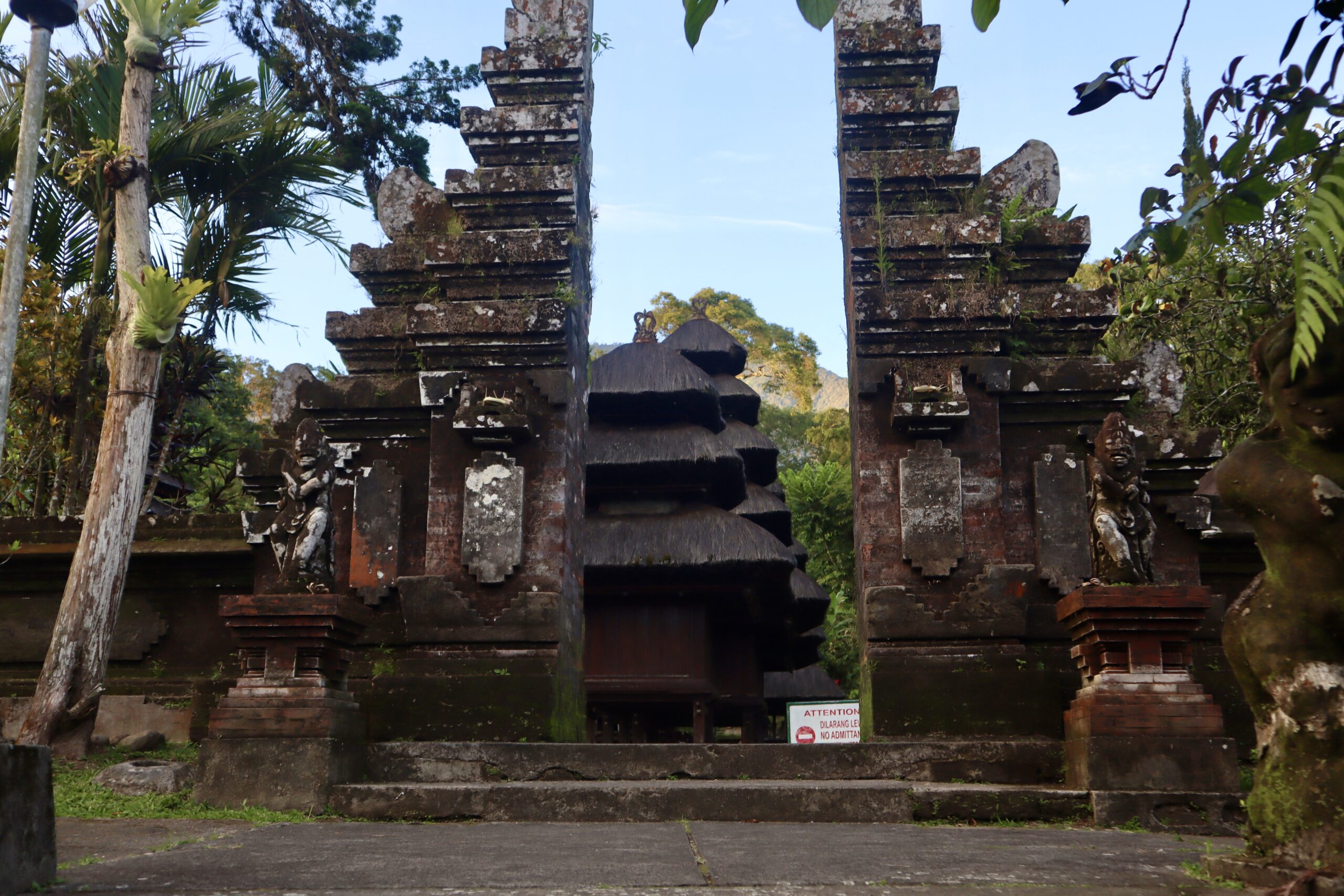
The Fascination with Balinese Temples and a Journey to the Magical Pura Batukaru

Deep beyond the field material
There is untamed ocean ethereal
In the actual time
A wondrous tale medieval
One of the most enchanting features of Bali, and a vital component of Balinese daily life that even short-term visitors inevitably encounter, is the Balinese temple—a true cornerstone of the island’s culture and its fairytale-like ambiance. Often referred to as the ‘Island of a Thousand Temples’—though this number represents only a tiny fraction of the actual count—Bali is home to countless temples, each offering insights into the island’s more nuanced aspects. These temples serve as windows into the depth of Bali’s extraordinary temple culture and timeless traditions, embodying the eternal struggle between good and evil, where the divine and eternal meet the mortal and transitory to recharge, rejuvenate, reinvent, and regain momentum.
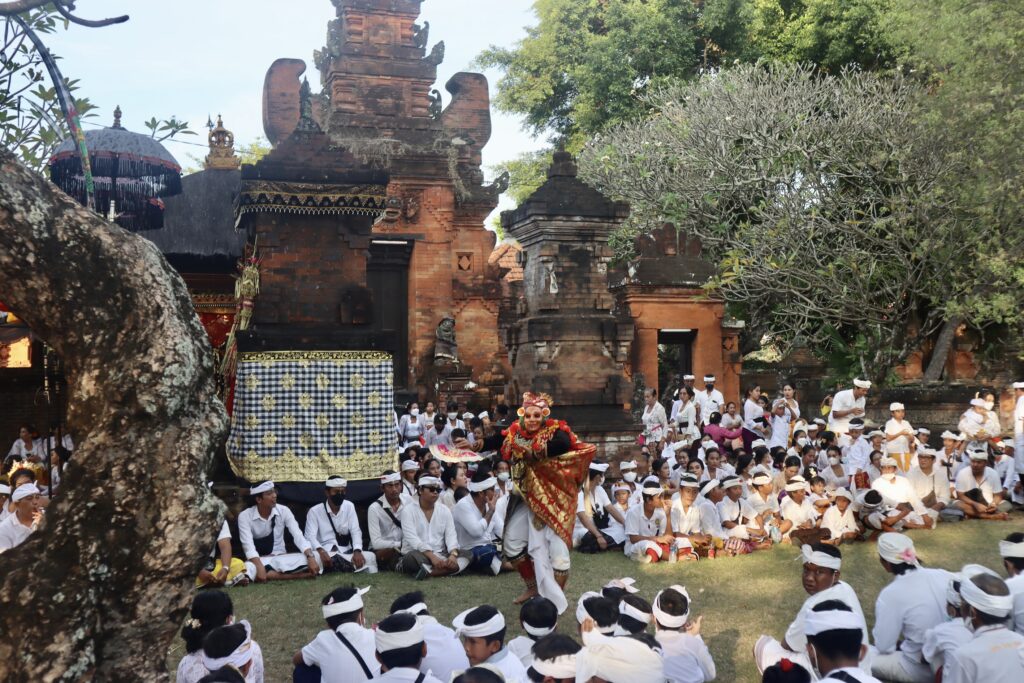
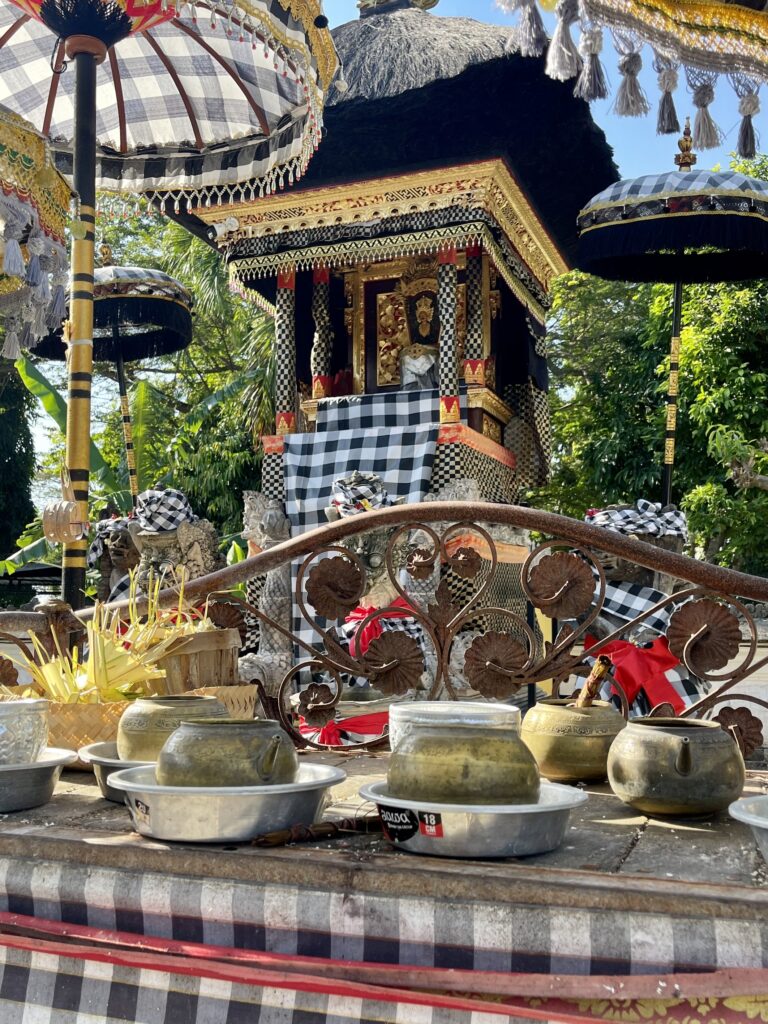


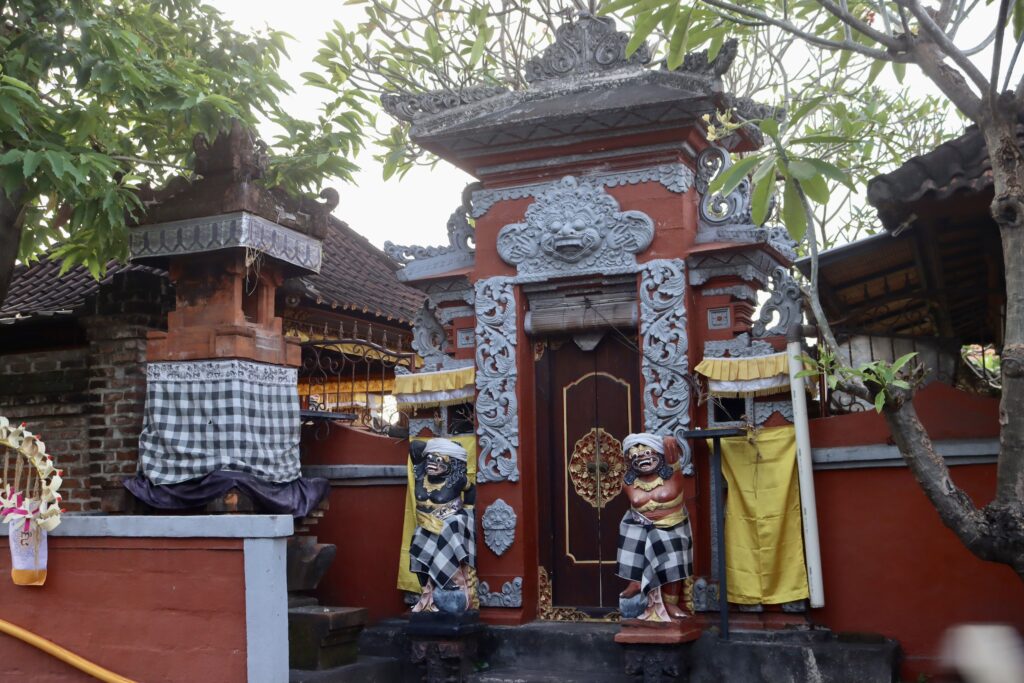


The Balinese way of life is profoundly ritualistic, characterized by elaborate practices of worship, daily offerings, and meticulous preparation and distribution of these offerings both within and outside homes and temple compounds. Daily offerings and prayers at home shrines and public temples permeate Balinese life and every aspect of its spiritual tradition. Propitious days according to the Balinese calendar, such as full moon, new moon, and the special Kajeng Kliwon day, which occurs twice each month, or larger ceremonies held mostly twice annually, are marked by elaborate offerings, joint temple prayers, and various expressions of devotion and sacrifice to the divine in its many forms. These large ceremonies, theatrical in nature, transform the temple grounds into sacred stages where visual and mystical drama unfold spontaneously, with masked actors displaying remarkable talent. The masks, imbued with magical powers, cast a spell on the actors, transforming them into mediums for the spirits and celestial beings they represent, conveying the perpetually unfolding dramas in the invisible realms.

Balinese temples are the sacred abodes of the gods. They stand as both spiritual sanctuaries and aesthetic marvels, uplifting the mind and soul of any devout seeker. Even the most uninitiated visitor is left speechless, overwhelmed by the temple’s wonders, its profound silence, and the aura of unfathomable mysteries from ancient times. These temples resonate with the lively presence of gods, goddesses, and spirits, reflecting the depth, true identity, and vibrancy of Balinese culture. They are extraordinary places of mass divine connection!

Often nestled within lush landscapes, Balinese temples harmoniously blend into their verdant surroundings, standing as architectural masterpieces that embody a heritage of sophisticated aesthetic norms and exquisite taste. Delving into the intricate shapes, particularly of the ancient temples, one encounters countless symbols and designs that both reveal and conceal the spirituality and profound mental frameworks of Balinese culture.

Historically, mainly constructed from red brick—a direct influence from the ancient Majapahit Empire, Bali’s cultural and religious predecessor—Balinese temples showcase various styles and building materials across different regions of Bali. In recent decades, a sweeping trend of rebuilding temples using black lava stone has significantly altered the aesthetic and appearance of Bali’s temples. Despite this shift, many beautiful old terracotta temples still remain, and preserving these architectural gems should be a top priority for both authorities and the people of Bali.

However, fathoming the essence of these temples, the lighthouses of Balinese ancient civilization, is perhaps more a matter of direct experience than theory. The Balinese are practitioners rather than preachers; they live their spirituality through daily rituals, offerings, and ceremonies, demonstrating a profound connection to their faith. This continuous practice provides a more straightforward path to the empowering fountain of life that lies beneath, where the quiet blessings of Betara-Betari (gods and goddesses) elevate the mind and bring a refreshing uplift to the soul and life as a whole.
Observing the daily ritual carried out in almost every Balinese household—the preparation and distribution of ‘canang sari’, a colorful square offering dish (10×10 centimeters) made from sacred flowers and plants, alongside a smaller triangular dish ‘segehan’ handwoven from banana leaf strips, containing white and yellow cooked rice and colorful petals—provides insight into the uniqueness of the Balinese way of life. This ritual highlights their unceasing interaction with the world of invisible beings, seeking support and protection through constant remembrance and offerings.
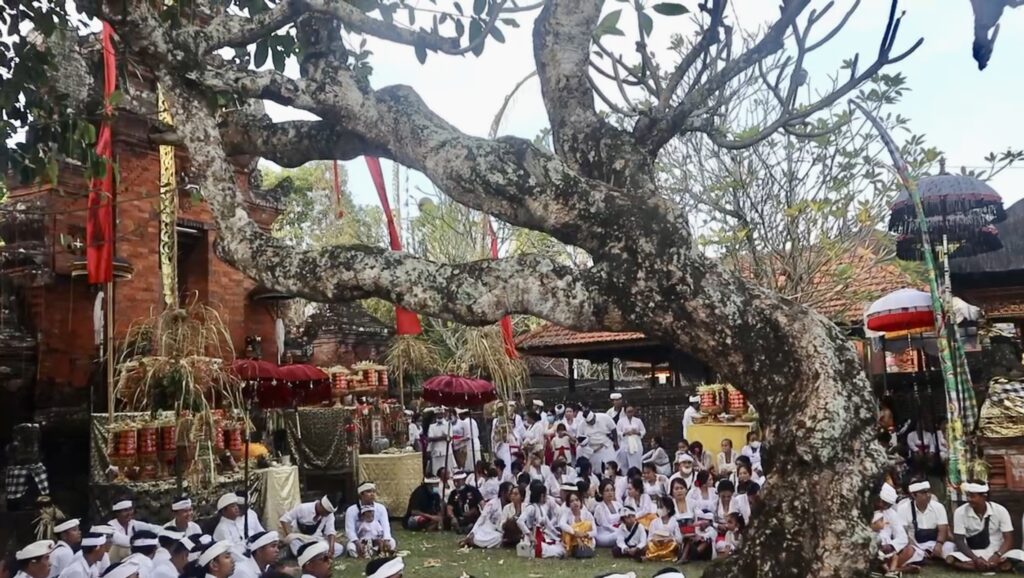
Temple ceremonies are a perpetual feature in Bali, taking place across the island at all times in its countless temples. The modest daily offerings of canang sari expand manifold during the biannual temple odalan anniversaries and other grand ceremonies. These events feature magnificent processions, where men and women, dressed in beautiful ceremonial outfits, accompany temple deities under striking traditional Balinese umbrellas, along with a myriad of offerings. Such occasions create unrivaled visual spectacles, all set to the sounds of the gamelan, the traditional Balinese percussion instruments. The unpredictable spontaneity of each ceremony, despite being passed down through generations, makes every event feel refreshingly new.
Every medium to large temple in Bali is a testament to the island’s rich tradition of courtyard design, an integral element of its ancient architectural system. Most temples typically feature at least two or three courtyards. The outer courtyard, known as jaba, serves as a space for temple festivals, dance performances, and other communal activities. The middle courtyard, jaba tengah, acts as a transitional space from the outer to the inner sanctums, often containing shrines dedicated to land spirits where prayers are offered to greet the “hosts” of the temple.

From here, one enters the innermost heart of the temple, the JEROAN, through a richly carved, imposing, and narrow wooden entrance gate. The steep stairs leading to this gate, combined with the extremely slim and tall gate, evoke mythical visions of a celestial pathway to heaven—a spectacular sight that artistically and realistically embodies the concept of a stairway to heaven.
In the innermost courtyard, a great deal of activity unfolds during monthly, biannual, and annual festive seasons. During these times, constant prayers, offerings, and trance rituals take place, with a continuous flow of beautifully attired worshippers arriving until late. Despite the bustling activity, the inner courtyard maintains an atmosphere of peace and sanctity, enveloped in the rich fragrances of offerings and aromatic incense, creating a truly heavenly ambiance.

It’s difficult to determine which aspect of Bali’s rich temple activities offers the most captivating experience—visually or audibly. Is it the vivid imagery of temple decorations, the numerous shrines and deity symbols adorned with fragrant offerings, or the natural grace and charm of the Balinese arriving for prayer in traditional garments? Perhaps it’s the incredibly artful performances, where sacred dances are brought to life by the resonant, metallic sounds of gamelan instruments—Bali’s unique orchestra of gongs. Or maybe it’s the spontaneous theatrical plays featuring Topeng masks, bursting with humor and parody, dramatic twists, and fierce duels, bringing to life countless otherworldly characters through hours of storytelling. Or the long and intricate processions of numerous deities, their golden effigies carefully balanced on the heads of men and women as they make their way to the nearest beach for ritual purification—a grandiose display of Balinese devotion to the divine.

In Bali, one often encounters pemangku priests, male and female, who serve as caretakers of Balinese temples. Dressed entirely in traditional white attire (with men wearing uniquely fashioned pemangku headdresses), they lead collective temple prayers, chant sacred hymns, and possess a deep understanding of the intricate complexity of Balinese offerings, known as banten. They oversee ceremonies, ensure the proper flow of rituals, and awaken devotees from trances by sprinkling holy water. Pemangkus diligently perform daily temple activities across the island and stand as some of the most dedicated guardians of Balinese temples and spiritual heritage.

Approaching Pura Luhur Batukaru, nestled at the foothills of Mount Batukaru in Tabanan, feels like entering a hidden, fantastical world, reminiscent of the fairytale realms depicted in Tolkien’s tales of Hobbits. Leaving behind the last mountain village on the route to the temple, visitors embark on a breathtaking, kilometer-long journey through a lush tropical forest. This sanctuary, teeming with towering trees, diverse ferns, orchids, and mosses, buzzes with the vibrant sounds of birds and wildlife, acting as a natural barrier. It’s a zone of magical stillness, effectively separating the mundane from the mystical aura that envelops the temple.
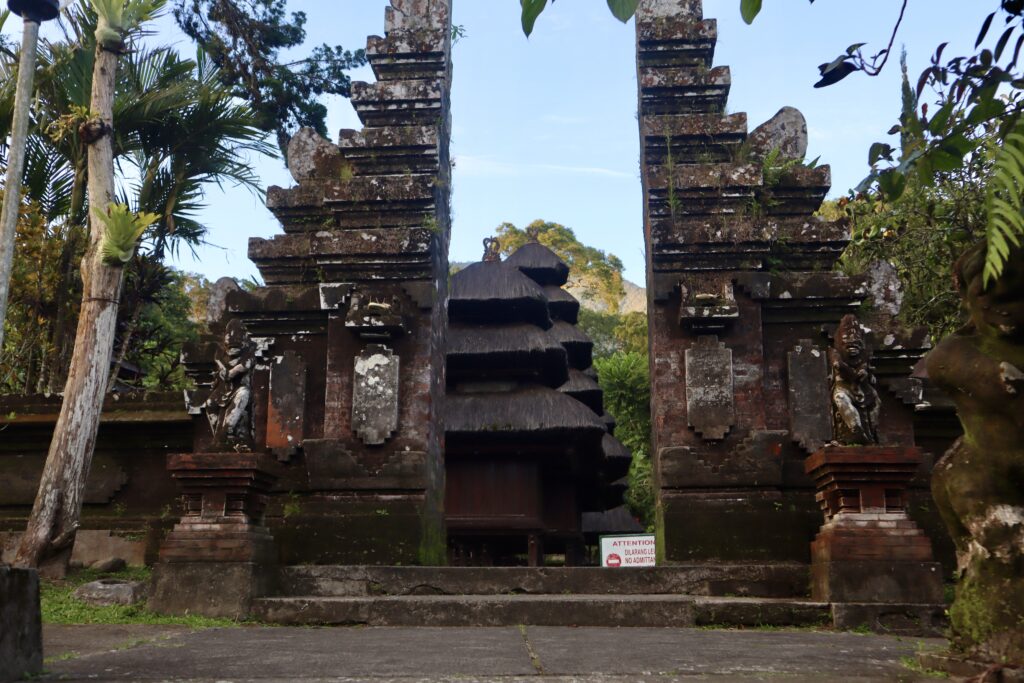

Pura Luhur Batukaru is esteemed as one of the revered Sad Kayangan Jagat temples – the Six Temples of the Universe — and is considered by some to be the oldest temple in Bali. Legend has it that it was constructed in the 11th century by the revered sage Mpu Kuturan, who is credited with establishing a network of protective temples across Bali. He also played a pivotal role in uniting diverse faiths under the unique Balinese fusion of the Shiva-Buddha religion. This syncretic faith features a complex system of offerings and ceremonies designed to invoke and celebrate the divine.

The ancient origins and historical depth of Balinese temples are palpably present in their atmosphere, and notably across the entirety of Bali — the last bastion of the ancient Shiva-Buddha civilization. Much of this history is cloaked in mystery, making the exploration of the origins of Bali’s remarkable temple culture a daunting, if not impossible, task. Yet, the allure and charm of these temples captivate many.

This is particularly true for Pura Luhur Batukaru, where the magical aura, ancient stone statues and shrines, along with other magnificent artifacts, some weathered by time, showcase breathtaking grandeur and evoke a profound sense of mystery. At the peak of worship and prayer, the indescribable beauty of the Balinese temple — a dwelling for the gods — uplifts the spirit and leaves an indelible mark on the soul.


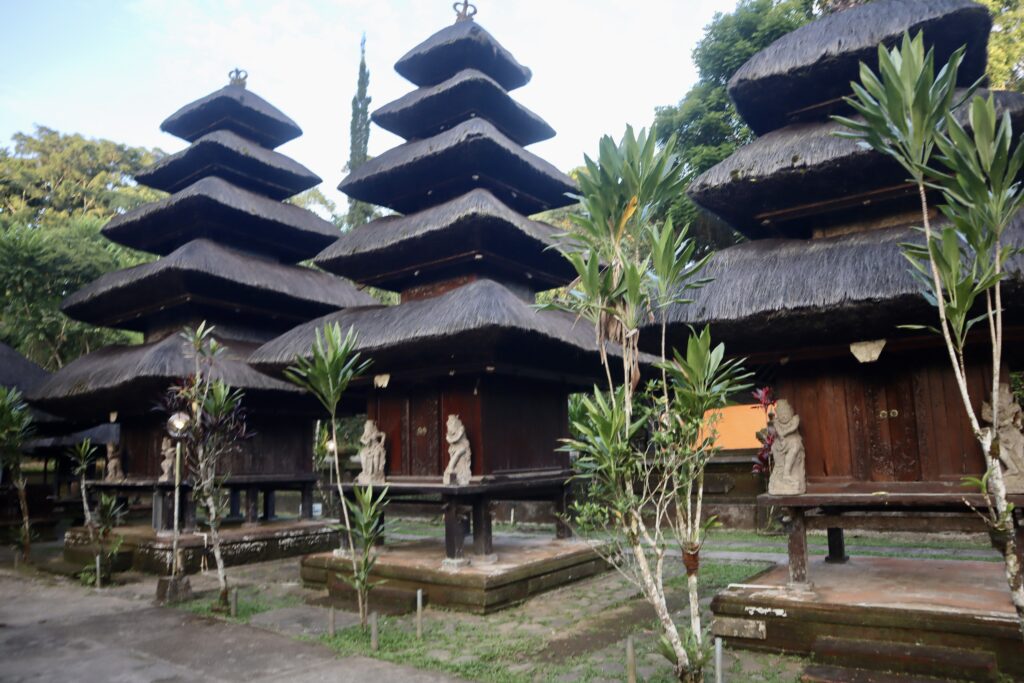


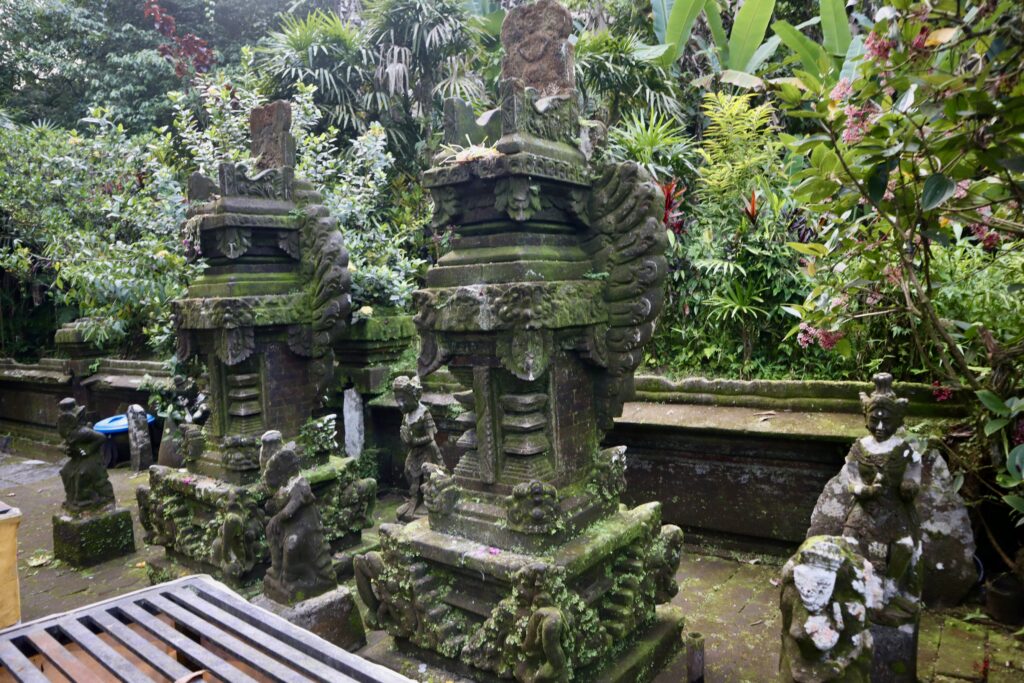

-

The Fascination with Balinese Temples and a Journey to the Magical Pura Batukaru
Deep beyond the field material There is untamed ocean ethereal In the actual time A wondrous tale medieval One of the most enchanting features of Bali, and a vital component of Balinese daily life that even short-term visitors inevitably encounter, is the Balinese temple—a true cornerstone of the island’s culture and its fairytale-like ambiance. Often…



Leave a Reply